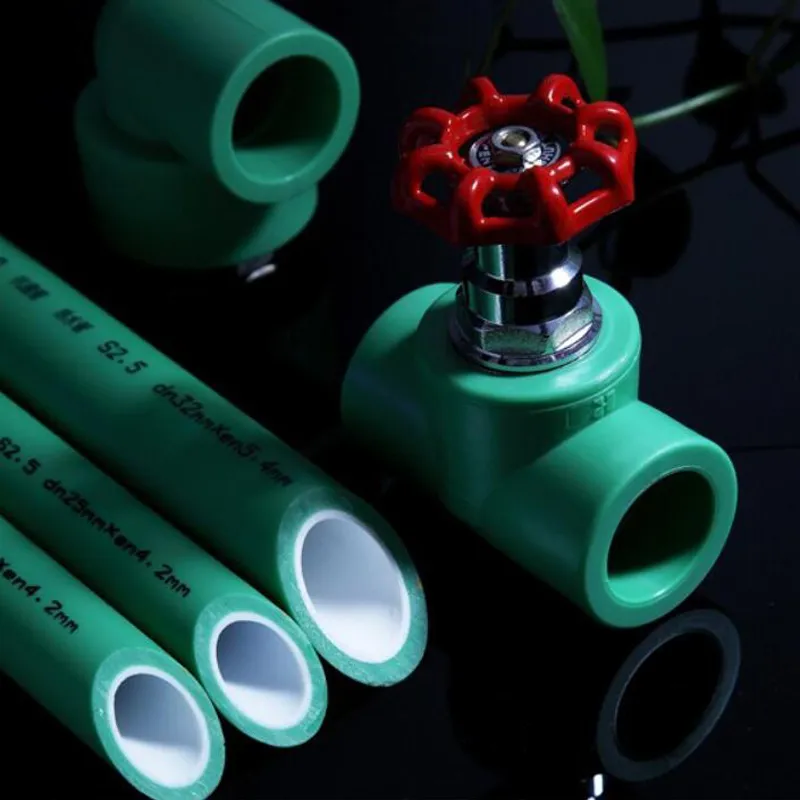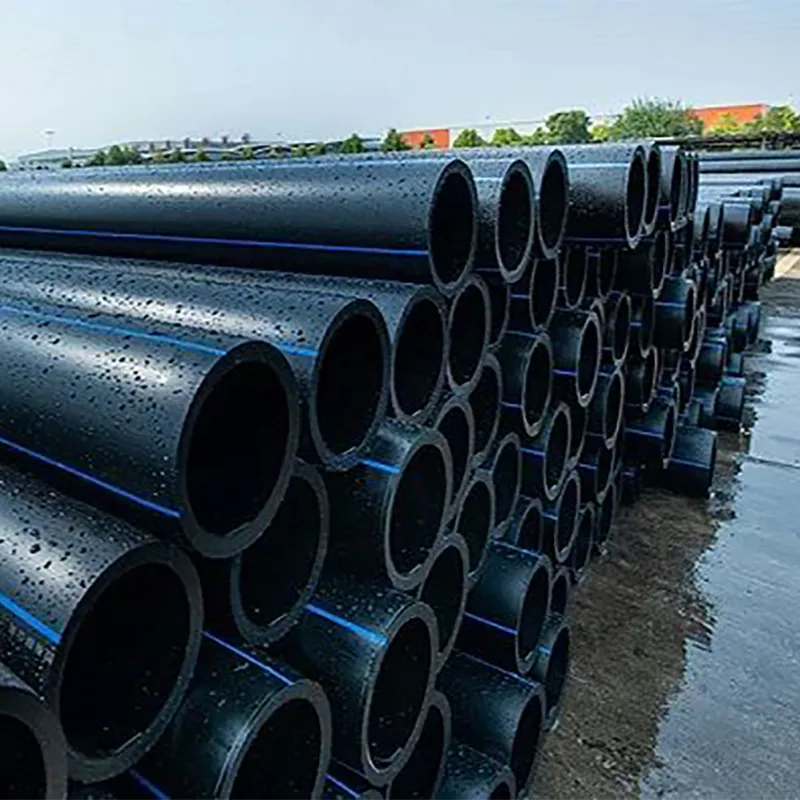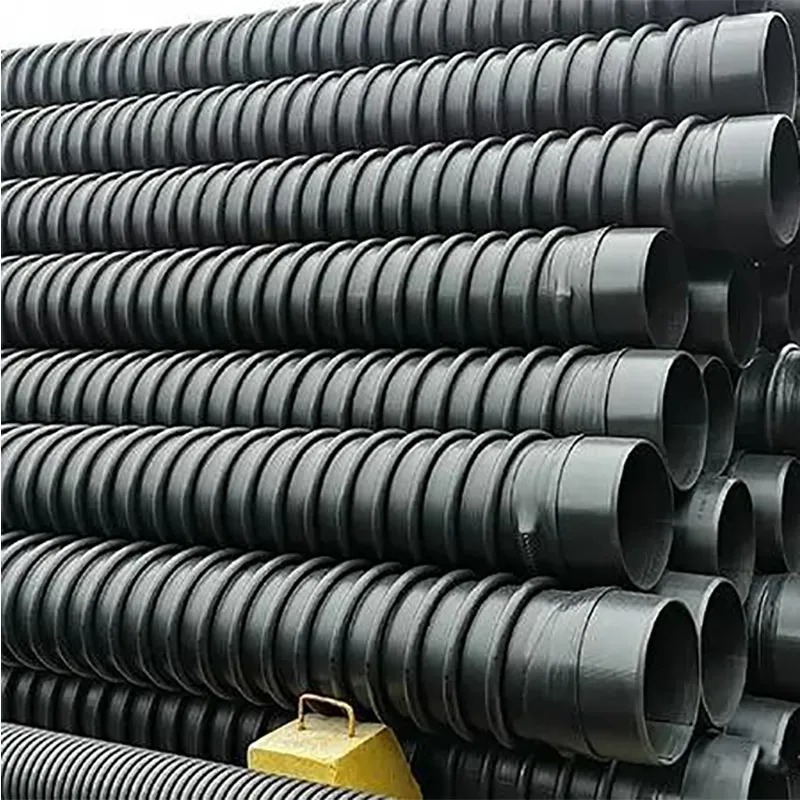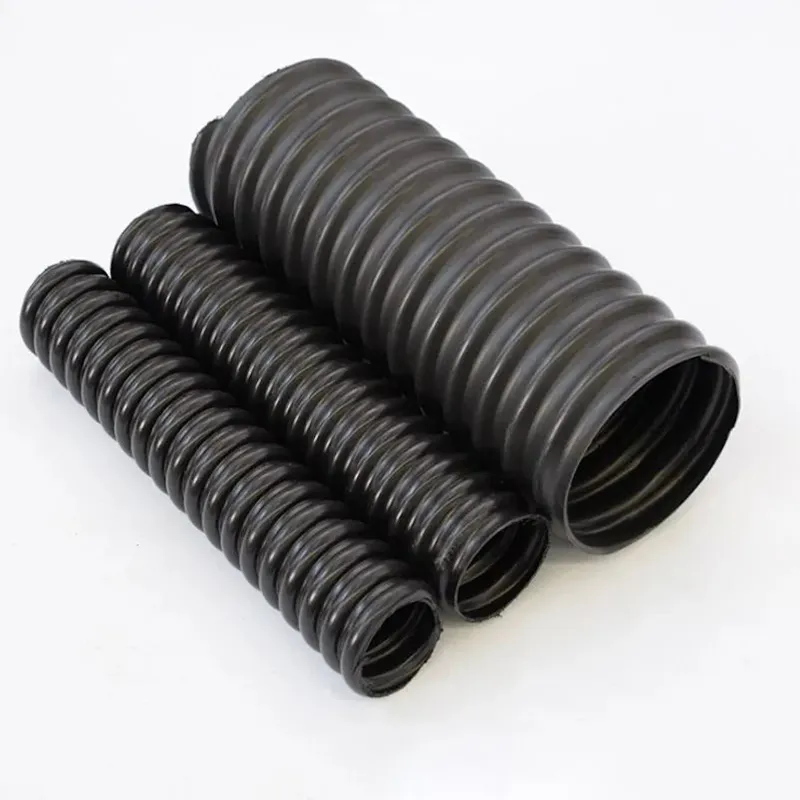Different plastic pipes PE, PPR, PVC
With the development of science and technology and the rapid development of the petrochemical industry, more and more industries use plastic pipes to replace conventional cast iron pipes, galvanized pipes, plastic-lined steel pipes and other materials in engineering water supply and drainage systems. Compared with traditional pipes, plastic pipes have significant advantages such as light weight, corrosion resistance, low water flow resistance, energy saving, simple and quick installation, and low cost, and are favored by the pipeline engineering industry. Moreover, plastic pipes have made great progress and improvement in design theory and construction technology in buildings, and have accumulated rich practical experience, which has led to plastic pipes occupying a very important position in building water supply and drainage pipeline projects and forming an unstoppable development trend.
Three kinds of material composition and parameter analysis
PE pipe: Polyethylene, the English name "polythylene" is abbreviated as PE, which is a thermoplastic resin obtained by polymerization of ethylene and has excellent resistance to industrial chemicals. According to the long-term hydrostatic strength of PE pipes, pipes and their raw materials are strictly classified into five grades: PE32, PE40, PE63, PE80 and PE100. PE80 and PE100 are mostly used in water supply and natural gas systems, and can produce large-diameter pipes. The pressure level is 0-1.0MPa.
PVC pipe: PVC, the full name is "Polyvinylchlorid", referred to as PVC, the main component is polyvinyl chloride, and other components are added to enhance its heat resistance, toughness, ductility, etc. Its specifications range from De16 to De630, and are divided into three types: water supply, water supply, and threading pipes. The pressure level is 0-1.6MPa.
PPR pipe: The full name is type III random polypropylene pipe, a copolymer (Poly Propylene Random Copolymer) formed by the polymerization of propylene monomer Propylene and ethylene monomer Ethene, which is a new energy-saving and environmentally friendly plastic product with international standards in the 1990s. PPR pipe is a new type of material. Its specifications range from De20 to De110, and are used in domestic water supply, hot water, and pure drinking water projects. The pressure level is 0-2.5MPa.
Advantages and commonalities of the three materials
(1) Advantages of PPR water supply pipes
In addition to the characteristics of light weight, good strength, corrosion resistance and long service life of general plastic pipes, PP-R pipes are also non-toxic (containing only two elements of carbon and hydrogen in the molecule, which will not cause any toxic side effects to the human body, and are well-deserved environmentally friendly and healthy materials), rust-proof and scale-proof (the inner and outer walls are smooth, with strong corrosion resistance and little flow resistance to flowing liquids), heat-resistant, anti-freezing, heat-insulating, and waste can be recycled. Therefore, it can be used as hot and cold water pipes, pure water pipes and drinking water pipes, etc. It also has the following main characteristics:
① Heat-resistant, heat-insulating, and energy-saving products. The Vicat softening temperature of PP-R pipe is 131.3℃, the maximum operating temperature is 95℃, and the long-term (50 years) operating temperature is 70℃. The thermal conductivity of this product is 0.24W/m℃, which is only 1/200 of the thermal conductivity of steel pipe. It is used for hot water pipe insulation and energy saving.
② Easy to install and reliable, using hot melt connection, a joint connection can be completed in a few seconds, and high-quality metal nickel-plated inserts are used to connect with metal pipes and water users, which is safe and reliable.
③ Easy to recycle.
(2) Advantages of PE water supply pipes
① PE pipe material is non-toxic, non-corrosive, and non-scaling, which can effectively improve the water quality of the pipe network; it is resistant to chemical corrosion, internal, external and microbial corrosion, has strong corrosion resistance, and is healthy; PE pipes have good resistance to water hammer pressure, and the integrated fusion joints and PE pipes have effective resistance to underground movement and end loads, which greatly improves the safety and reliability of water supply.
② It is easy to form a closed anti-seepage system by butt welding and electric fusion welding. When laying along the trench, it can reduce the amount of trench excavation and the amount of accessories used.
③ Lightweight and easy to install; the angle of the pipe fittings can be processed at will.
④ Strong wear resistance and excellent hydraulic performance, no outer layer protection is required for buried pipes. It can be used in earthquake and mining area soil settlement areas, and can also be laid at the bottom of rivers by sinking method.
⑥ Good environmental adaptability and frost resistance. It can be used for indoor and outdoor water supply pipes.
⑦ Long service life, with a service life of more than almost 50 years;
⑧ Easy to recycle.
(3) Advantages of PVC pipes
① In the production of general resins, PVC resin has the lowest ethylene consumption and the lowest production cost. The domestic production of PVC requires 0.5314 tons of ethylene per ton, while the average ethylene consumption per ton of polyethylene is 1.042 tons. The domestic ethylene consumption per ton of PVC resin is about 50% less than that of polyethylene. The raw material chlorine used in the production of PVC is an important way to balance the production of chlorine in caustic soda. Caustic soda is an indispensable and very important raw material for the national economy. In addition, from the perspective of plastic products, PVC has good compatibility with various additives. A large amount of cheap fillers can be added to the production of pipes, which greatly reduces the production cost.
② PVC pipes have good mechanical properties and excellent corrosion resistance. They are light in weight, easy to install, and require no maintenance. PVC pipes with good processing have a service life of up to 50 years. Therefore, PVC pipes are a good plastic product with low production cost, high strength, and corrosion resistance.
③ Connection method - bonding, convenient and fast.
④ Easy to recycle.
Comparison of the disadvantages of the three materials
(1) Disadvantages of PPR water supply pipes
① Few pipe specifications and accessories. The types of accessories and valves are not complete, and there is a problem of inconvenience in connecting with metal doors. The largest specification of large-size pipes is currently Dn160, and there is no larger specification. It changes greatly due to temperature.
② The rigidity and impact resistance are worse than metal pipes and are easily damaged.
③ The linear expansion coefficient of the pipe is large.
④ Poor UV resistance. Under long-term exposure to sunlight and ultraviolet rays, PPR pipes are prone to aging, which reduces their service life.
(2) Disadvantages of PE
① PE is expensive. With the continuous promotion, the price of pipes is now acceptable, but the price of pipe fittings is still too high.
② PE cannot be used for hot water pipe networks.
③ High pressure is required for hot melt welding and the cooling time is long.
④ It is easy to age when exposed to outdoor sunlight.
(3) Disadvantages of PVC pipes
① Few pipe specifications and accessories. The accessories and valves are not complete, and there is a problem of inconvenience in connecting with metal doors.
② The rigidity and impact resistance are worse than metal pipes and are easily damaged.
③ The buried connection has low compressive strength and is easy to break.
The above three types of pipes are widely used in water supply systems (fire water supply systems use steel skeleton plastic composite pipes). PPR pipes can be used for hot water pipes. Outdoor large-diameter water supply networks use PE pipes.
Comparison of three pipe connection methods
PE: When DN≤63, use injection hot-melt socket connection or hot-melt butt connection; when DN≥75, use hot-melt butt connection or electric-melt socket connection; use flange or thread connection when connecting with different materials.
PPR: Use injection hot-melt socket connection; use flange or thread connection when connecting with different materials.
PVC: Use special adhesive for socket bonding, and use flange or thread connection when connecting with different materials.
When the pipe diameter is greater than or equal to 75mm, PE should be used from the cost aspect (higher price of pipe fittings). Outdoor pipes generally have larger pipe diameters, so PE is mainly used for outdoor pipe networks.
Comparison of the aesthetics of three pipes
PE is mainly black and black with blue stripes (with anti-ultraviolet function) on the market today.
PPR is mainly white and gray on the market today.
PVC is mainly white and blue on the market today.
From the perspective of visual beauty, indoor pipes should use PPR pipes or PVC pipes.






294.webp)
476.webp)
420.webp)
146.webp)
460.webp)
287.webp)
274.webp)
688.webp)


